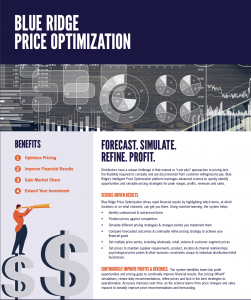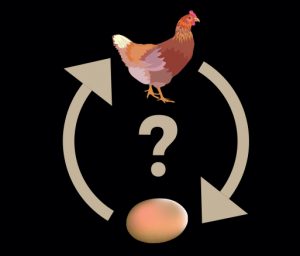Pricing Strategy #4: You’d Be Dumb to Ignore Intelligent Pricing with SCP
 Welcome back to our series!
Welcome back to our series!
We’ve been talking about pricing strategies you’d be dumb to ignore during the pandemic. This series is not just for “getting through”. It’s a new lifestyle. Your new reality, new normal, next normal. Whatever you want to call it.
Consumer buying trends have changed forever, leaving businesses slim on cash – to put it lightly. “Adapt or die” is the mantra for 2020. So today we want to deep-dive into how you can use tools that combine intelligent pricing with strategic supply chain planning (SCP) and inventory reduction, as a cash strategy to offset falling sales.
How Bad is it?
Well, that depends on your industry.
Coronavirus is causing a clear and present evolution for retailers globally. For some retail and distribution businesses, the pandemic is a calamity, while others are experiencing a boom.
Overall,
- In March, America’s total retail sales fell by 8.7% from the previous month, the biggest decrease in the three decades the government has been recording them. This is expected to worsen.
- In the EU, cumulative lost retail sales caused by the outbreak from March 9 to April 20 are expected to exceed $4 million USD (3.26 million GBP), with Germany, France and the UK hit hardest.
Where is the biggest loss happening?
- Clothing sales fell by 51%
- Home furnishings fell by 27%
- Global auto sales are expected to plummet 22% in 2020
- Department stores (ugh!) - Macy's saw a 64% decline in shares from late February to late March
Grocers and big general retailers that also sell food, like Costco and Walmart, have actually seen sales rise. Not surprising. And need I say anything about toilet paper??? To the consumers reading this, it’s a crappy topic... but I’ll mention it anyway. Just this morning, Kimberly-Clark Corp. reported an 8% increase in Q1 sales. Who’s shocked? [Crickets].
But the Real Winner is Ecommerce
Amazon saw such a rapid rise in demand that their ability to process new orders was threatened; last month they had to temporarily block third-party sellers from shipping non-essential products to its warehouses.
In addition, Amazon has taken on more than 100,000 new staff in the past month, and said last week that they will hire 75,000 more.
Cash is the Name of the Game
We’ve blogged quite a bit about how to free up cash in a pandemic. Whether brick-and-mortar or online is the focus, freeing up cash is the name of the game:
"Without a reliable revenue stream, retailers with ample cash on hand are better positioned to weather the storm, analysts say."
With the pedal to the metal on ecommerce, competitive pricing and price transparency are making it difficult for both retailers and distributors to find those margins. That’s an area where intelligent price optimization tools are providing much-needed relief.
Because inventory is typically one of top balance sheet items, being able to shape demand through strategic pricing intelligence is the best way to free up cash.
Cash Through Intelligent Pricing
Forget price cuts…
Forbes recently reported that, "Having an intelligent pricing strategy that can quickly interpret, recommend, and act on pricing and margin insights will save more companies in this pandemic than the severest price cuts ever will."
Of all the levers a company can use to stay profitable, intelligent pricing is by far the most powerful. Here’s some interesting research from McKinsey & Company to support this:
- A 1% price increase yields a 22% increase in EBITDA margins for distribution-based businesses
- It would take a 7.5% reduction in fixed costs to achieve the corresponding 22% increase in EBITDA that a 1% increase in pricing delivers
- The more integrated accounting, finance, production, sales, and service data, the better the pipeline, backlog, order, margin and revenue decisions every business will be able to make.
- The more effective the commercial analytics, deal intelligence and deal price guarantee applications, the more they’re able to choose the best possible pricing strategy during chaotic times.
Create an Inventory Optimization “Sweet Spot”
Inventory reduction through strategic supply chain planning + pricing is where companies will create their profitability sweet spot.
We know that inventory optimization solutions – especially those extending across supply chain levels (or multi-echelons) – can reduce inventory 10-20% while maintaining or even improving service levels, typically in under 90 days. Boom! Instant working capital!
An even faster path to profit improvement is to combine inventory optimization and supply chain planning with better pricing.
Together, these two create the holy grail of results, up to a 22% improvement for distributors and a 7.8% improvement for retailers. Price Optimization + Supply Chain Planning tools drive cash opportunities through:
- Profit-Driven Prices: Measure willingness-to-pay to rapidly identify underpriced and overpriced items by channel at the max-profitability point, versus guessing
- Continuous Improvement: Implement price changes to continuously improve price optimization using intelligent machine learning, which gets smarter so you can achieve greater profits over time
- Demand Shaping: Consider inventory position to strategically deplete inventory or shape demand as customer demand is volatile and inventory position becomes unpredictable
- Price Sensitivity: Identify products and channels that will respond well to promotions for additional demand shaping.
Learn More
So there you have it. You’d definitely be dumb to ignore intelligent pricing tools that combine better pricing with supply chain planning tools.
To learn more, grab this datasheet:
Also read:
The Chicken and The Egg: Using Price Optimization and Pricing Analytics to Shape Demand
Go to Strategy 5: You'd Be Dumb to Ignore Shrinking Revenue & Profits
Back to Strategy 3: You'd Be Dumb to Ignore Flexibility to Cost Changes
Back to Strategy 2: You'd be Dumb to Ignore Competitor Pricing
Read this series from the beginning





Comments are closed.